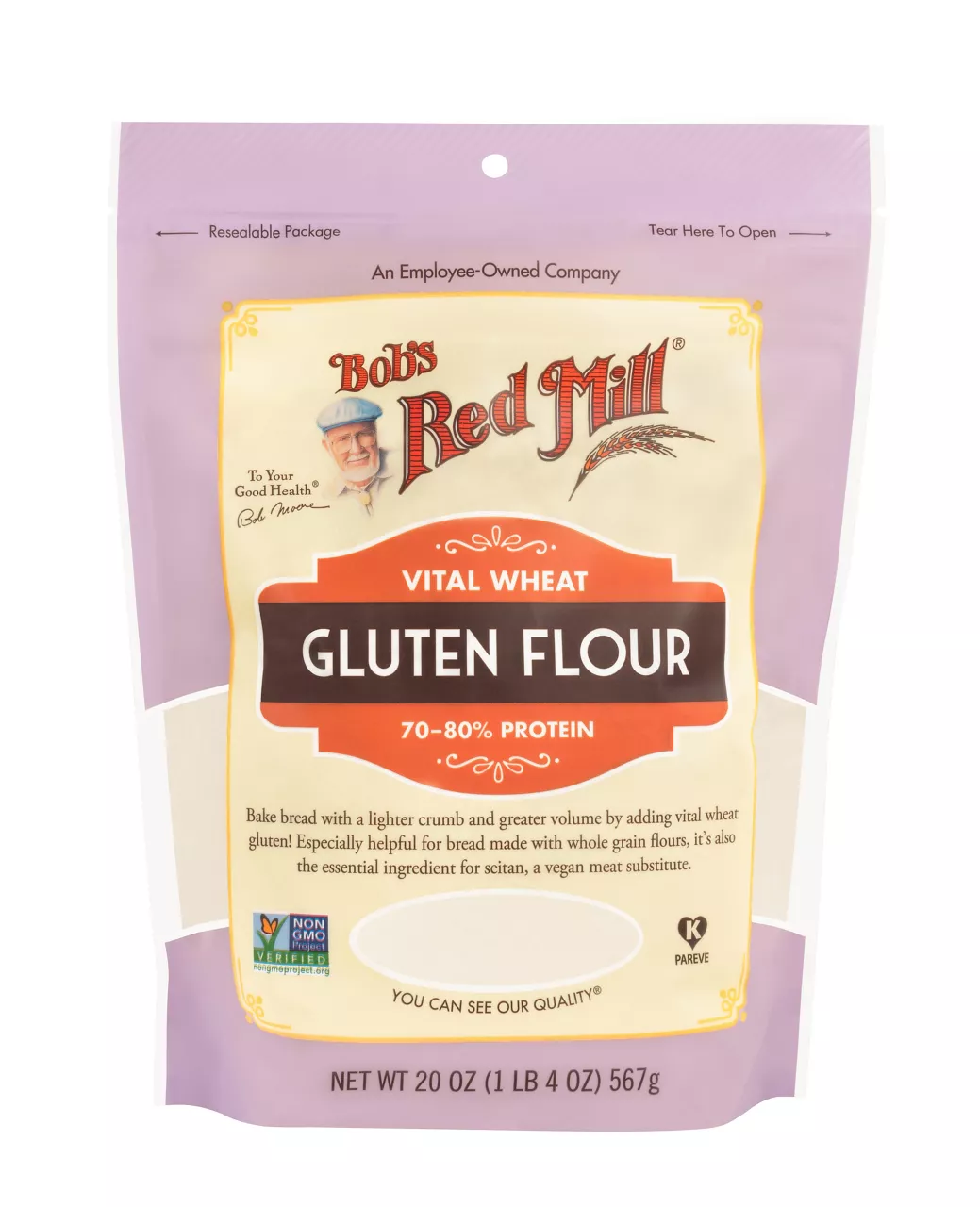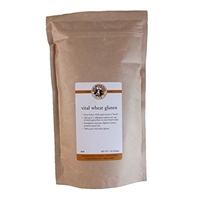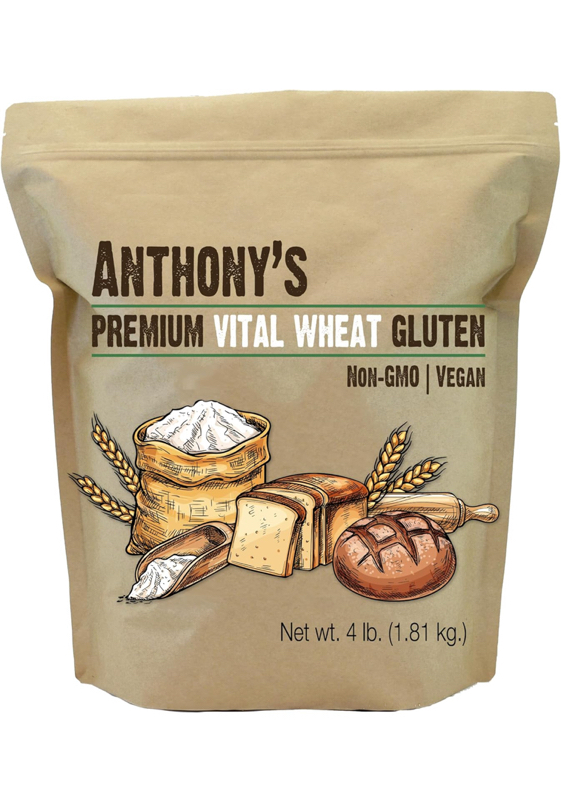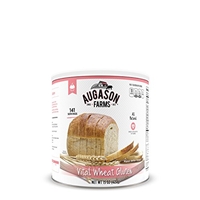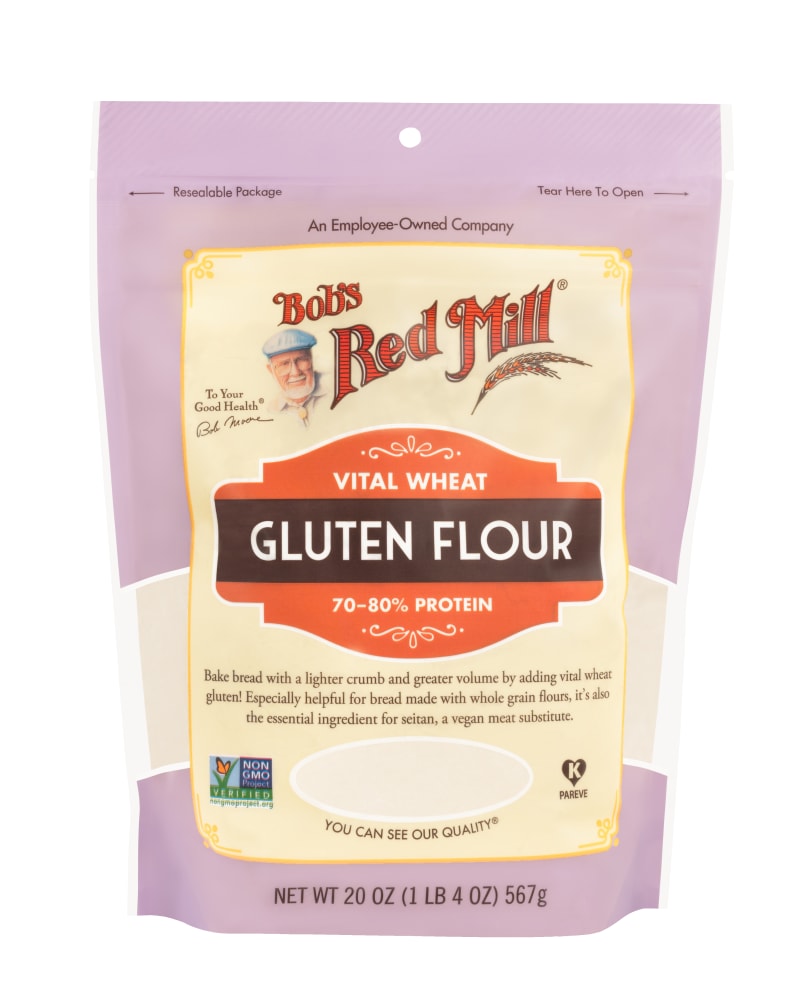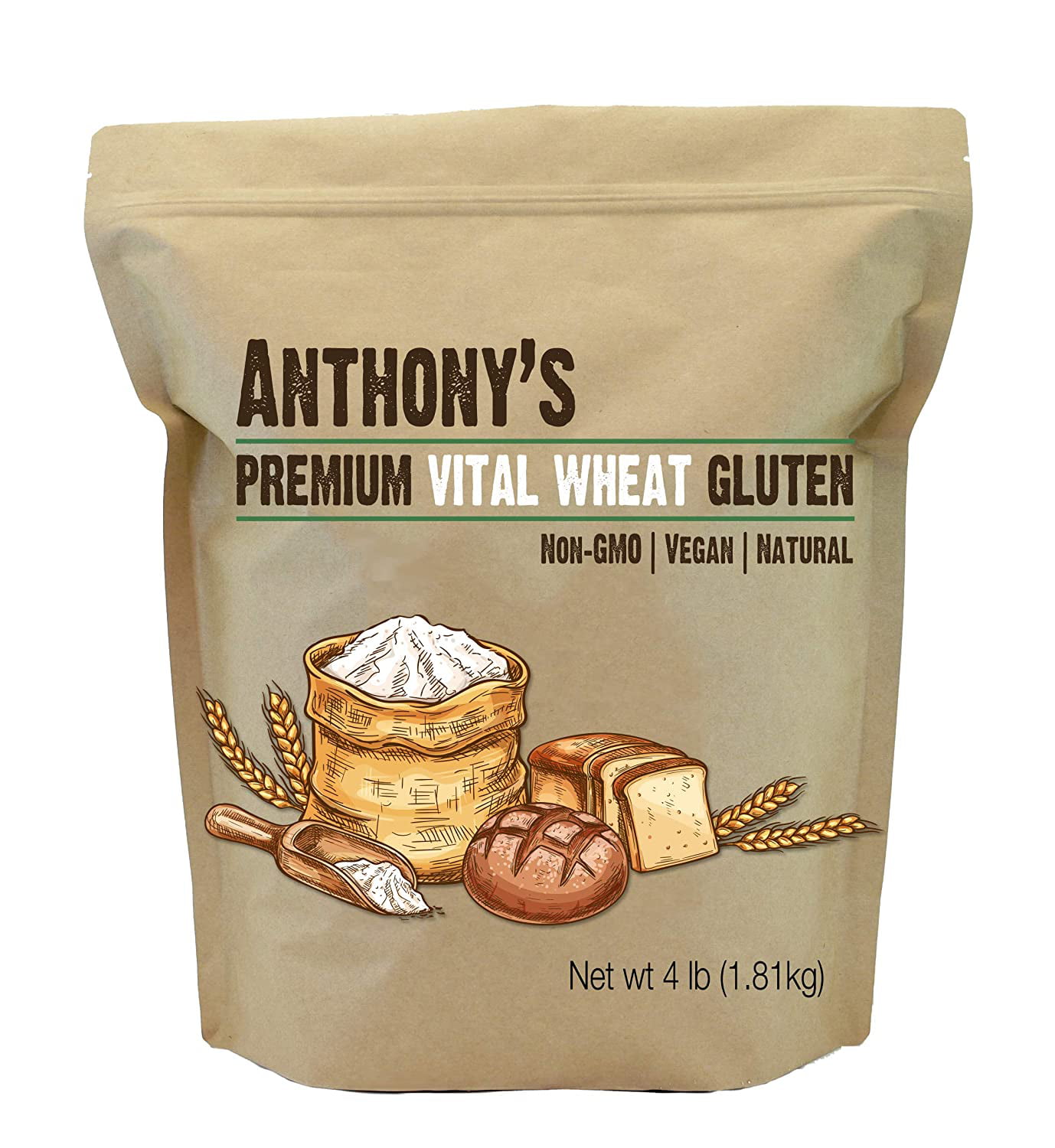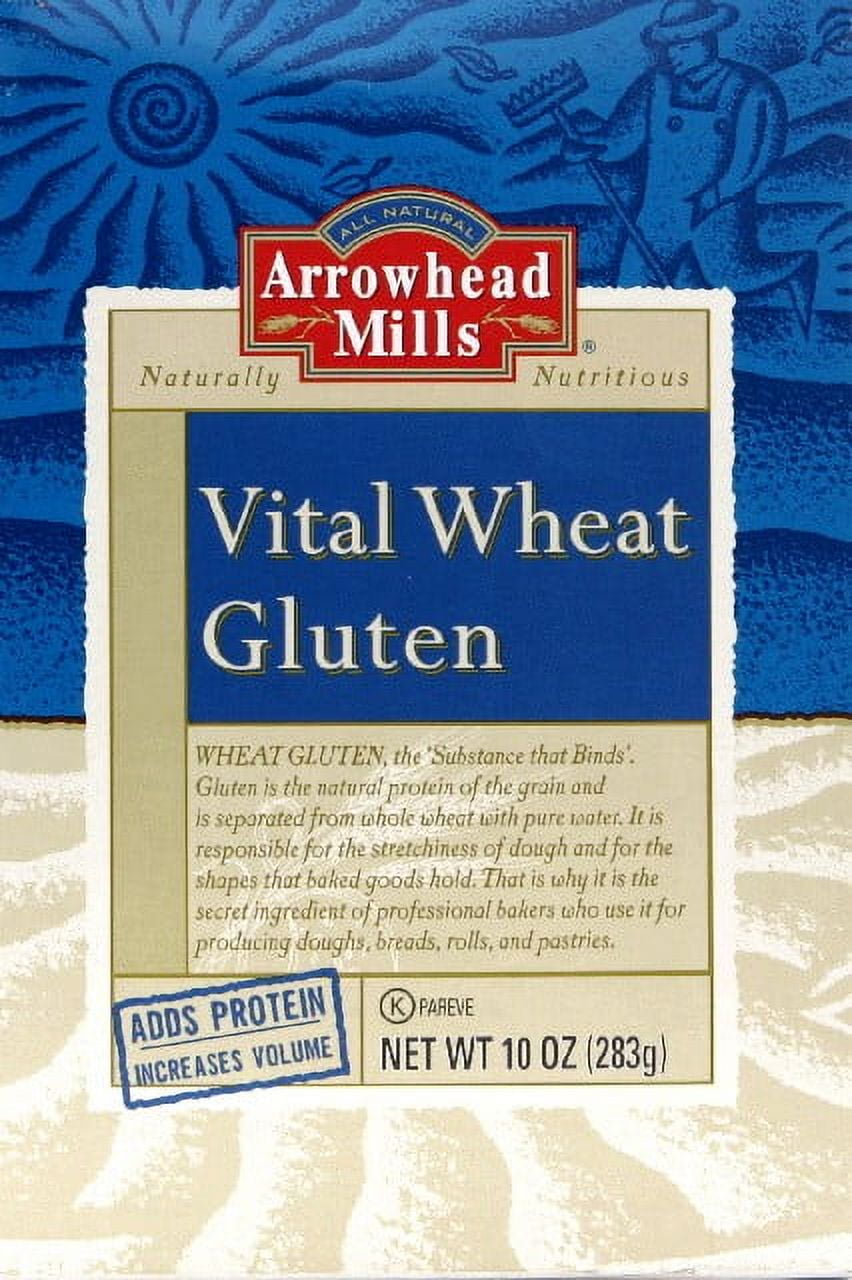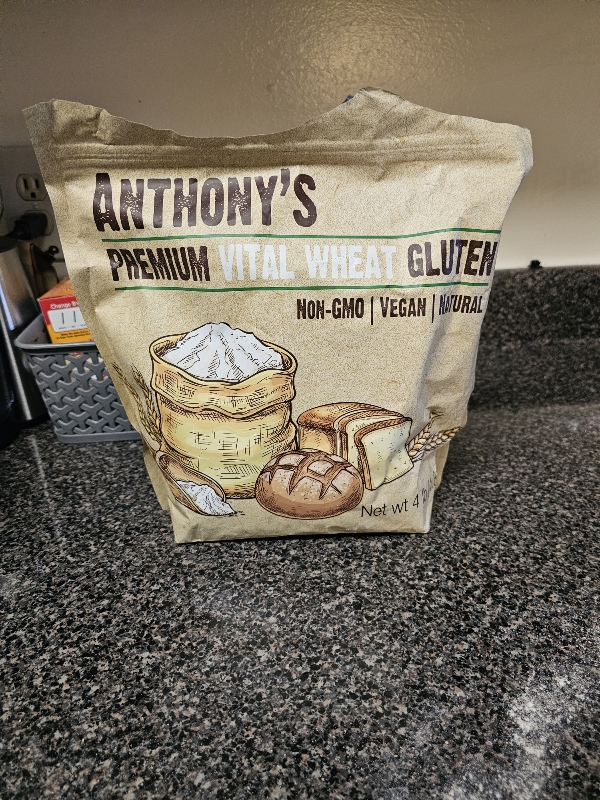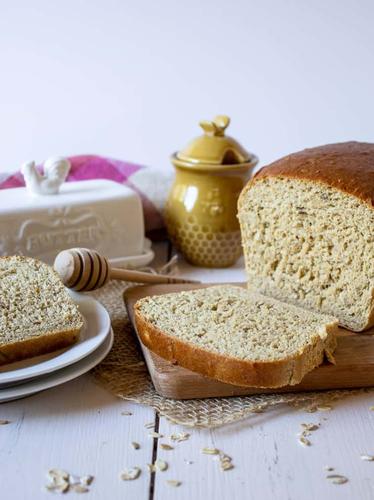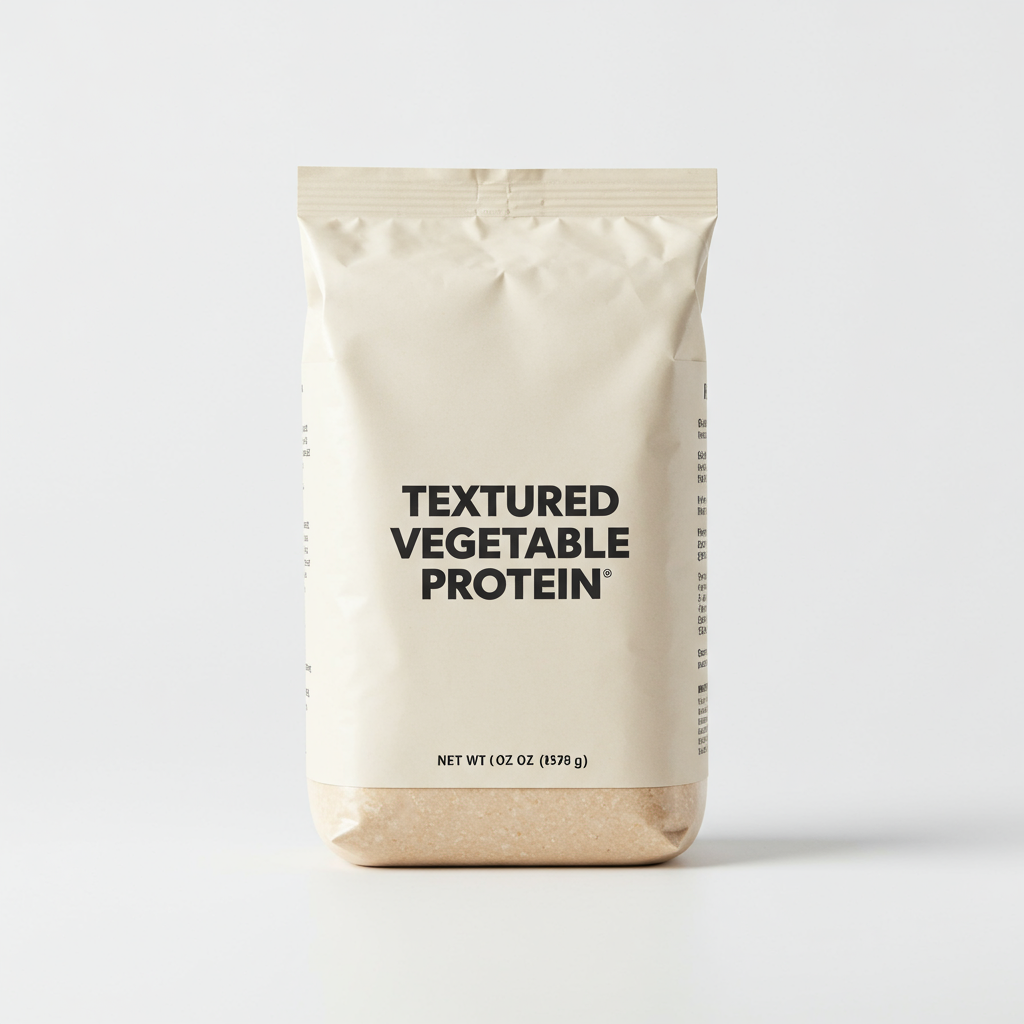BREADS
Vital Wheat Gluten
Vital wheat gluten is a concentrated protein source derived from wheat, utilized primarily to improve the texture and elasticity of dough. It is a versatile ingredient, popular among vegans and vegetarians for its high protein content and meat-like qualities in dishes.
In bread recipes, the addition of vital wheat gluten improves dough strength and elasticity, resulting in a higher rise and chewier texture. It is also a key ingredient in the making of seitan, a meat substitute that mimics the texture of meat when cooked, which has gained popularity in plant-based diets.
36%
CARBS
7%
FAT
57%
PROTEIN
76 Vital Wheat Gluten Products
Used In 1 Recipe
Vital Wheat Gluten Is Frequently Used With
Vital Wheat Gluten FAQ
Vital wheat gluten is often used in baking to improve the elasticity and texture of dough, giving it a higher rise and chewier bite. It also aids in developing the structure of the final product, particularly in wholegrain and low-gluten flours where natural gluten content is low. It's also the main ingredient in seitan, a popular meat substitute in many plant-based diets due to its meaty texture and high protein content.
One common mistake people make when using vital wheat gluten is adding too much or too little. Too much can make the dough tough and hard to work with, while too little may not give the desired effect. It's best to follow the recommended ratio in your recipe.
When creating seitan or other meat substitutes, remember that its flavor largely depends on the seasonings and marinades you use. Vital wheat gluten in itself has a very neutral taste.
As a lesser-known trick, you can try adding a little bit of vital wheat gluten to your homemade pizza dough. It will provide a marvelous chewy-crispy crust that you usually only get from a professional pizza oven.
How does vital wheat gluten taste?
Is vital wheat gluten good for you?
Can I use vital wheat gluten to make bread?
What is the main use of vital wheat gluten?
Why add vital wheat gluten to bread dough?
What is seitan and how does vital wheat gluten play a part in it?
Can too much vital wheat gluten ruin a bread recipe?
Can I use vital wheat gluten to make pizza dough?
What can I substitute for vital wheat gluten?
Does vital wheat gluten contain gluten?
Expiration & Storage Tips
When does vital wheat gluten expire?
Unopened, vital wheat gluten can last for up to two years if stored in a cool, dry place. It is best to check the best use-by date printed on the package to be sure. Once opened, it should be consumed within six months. Freezing isn't a common practice, but if you seldom use it, you may choose to freeze it, which can extend its lifespan to about one year.
How do you tell if vital wheat gluten is bad?
Telling if vital wheat gluten has gone bad is quite straightforward. If it has developed an off-odor, or you see mold or bugs in it, it’s definitely time to throw it out. Any changes in its color, from its natural cream or white, should also be a warning sign. Check it well before use to make sure it hasn’t clumped together, which can indicate moisture contamination.
Tips for storing vital wheat gluten to extend shelf life
• Keep unopened vital wheat gluten in a cool, dark and dry place.
• After opening, transfer it to an airtight container. This keeps out moisture and pests, and will extend its shelf life.
• If you only use it occasionally, consider refrigerating it. This isn't necessary but can keep it fresh longer.
• For long-term storage, divide it into smaller portions and store it in the freezer in an airtight bag. To defrost, simply leave it at room temperature for a few hours before use.
EXPIRES WITHIN
10 - 14
MONTHS
Substitutes
Health Info
Macros
1g
CARBS
0g
FAT
1g
PROTEIN
Allowed on these diets
LOW FAT
HIGH CALCIUM
VEGETARIAN
MEDITERRANEAN
VEGAN
LACTOSE FREE
Contains these allergens
WHEAT

